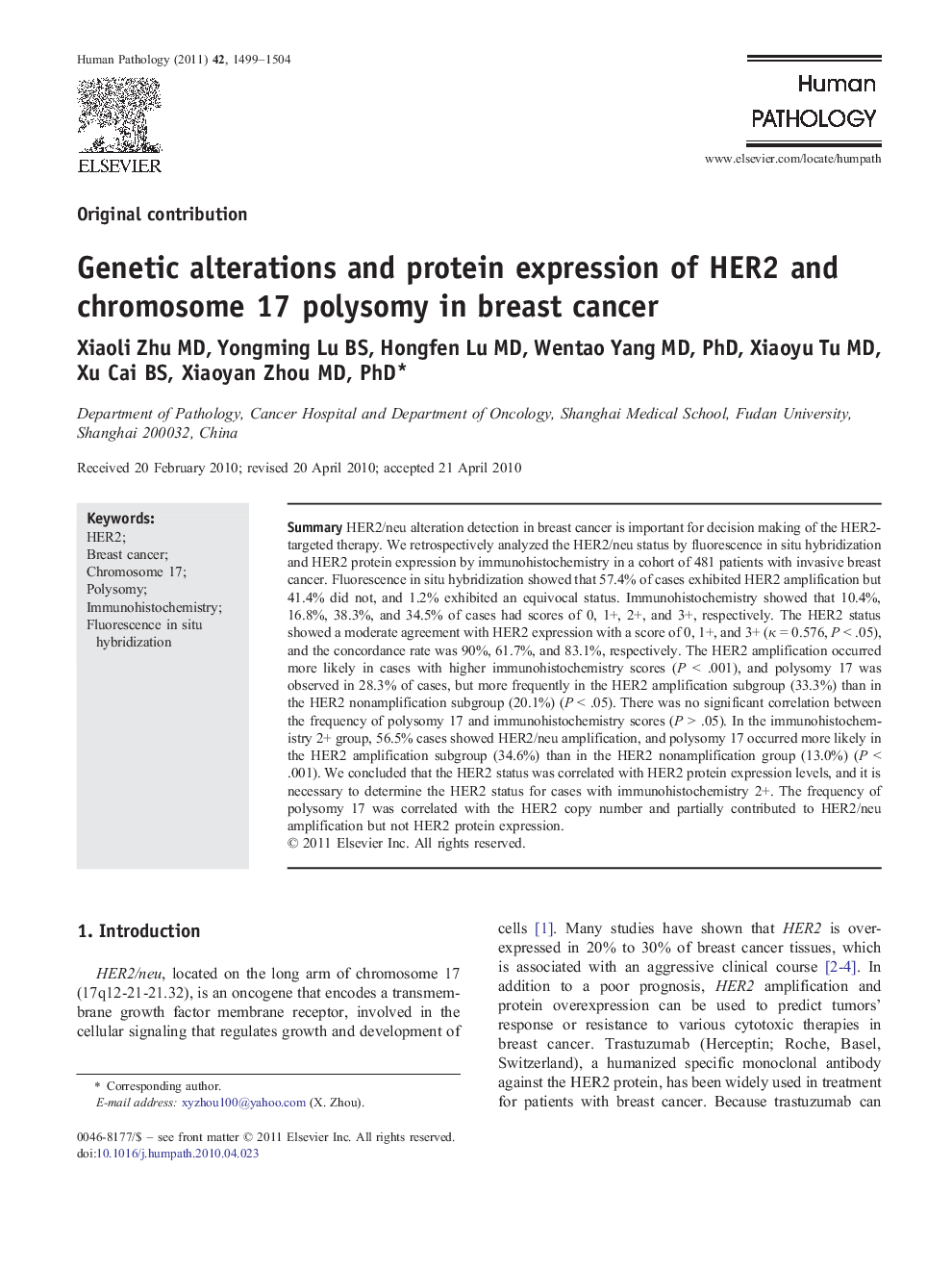| Article ID | Journal | Published Year | Pages | File Type |
|---|---|---|---|---|
| 4133980 | Human Pathology | 2011 | 6 Pages |
SummaryHER2/neu alteration detection in breast cancer is important for decision making of the HER2-targeted therapy. We retrospectively analyzed the HER2/neu status by fluorescence in situ hybridization and HER2 protein expression by immunohistochemistry in a cohort of 481 patients with invasive breast cancer. Fluorescence in situ hybridization showed that 57.4% of cases exhibited HER2 amplification but 41.4% did not, and 1.2% exhibited an equivocal status. Immunohistochemistry showed that 10.4%, 16.8%, 38.3%, and 34.5% of cases had scores of 0, 1+, 2+, and 3+, respectively. The HER2 status showed a moderate agreement with HER2 expression with a score of 0, 1+, and 3+ (κ = 0.576, P < .05), and the concordance rate was 90%, 61.7%, and 83.1%, respectively. The HER2 amplification occurred more likely in cases with higher immunohistochemistry scores (P < .001), and polysomy 17 was observed in 28.3% of cases, but more frequently in the HER2 amplification subgroup (33.3%) than in the HER2 nonamplification subgroup (20.1%) (P < .05). There was no significant correlation between the frequency of polysomy 17 and immunohistochemistry scores (P > .05). In the immunohistochemistry 2+ group, 56.5% cases showed HER2/neu amplification, and polysomy 17 occurred more likely in the HER2 amplification subgroup (34.6%) than in the HER2 nonamplification group (13.0%) (P < .001). We concluded that the HER2 status was correlated with HER2 protein expression levels, and it is necessary to determine the HER2 status for cases with immunohistochemistry 2+. The frequency of polysomy 17 was correlated with the HER2 copy number and partially contributed to HER2/neu amplification but not HER2 protein expression.
